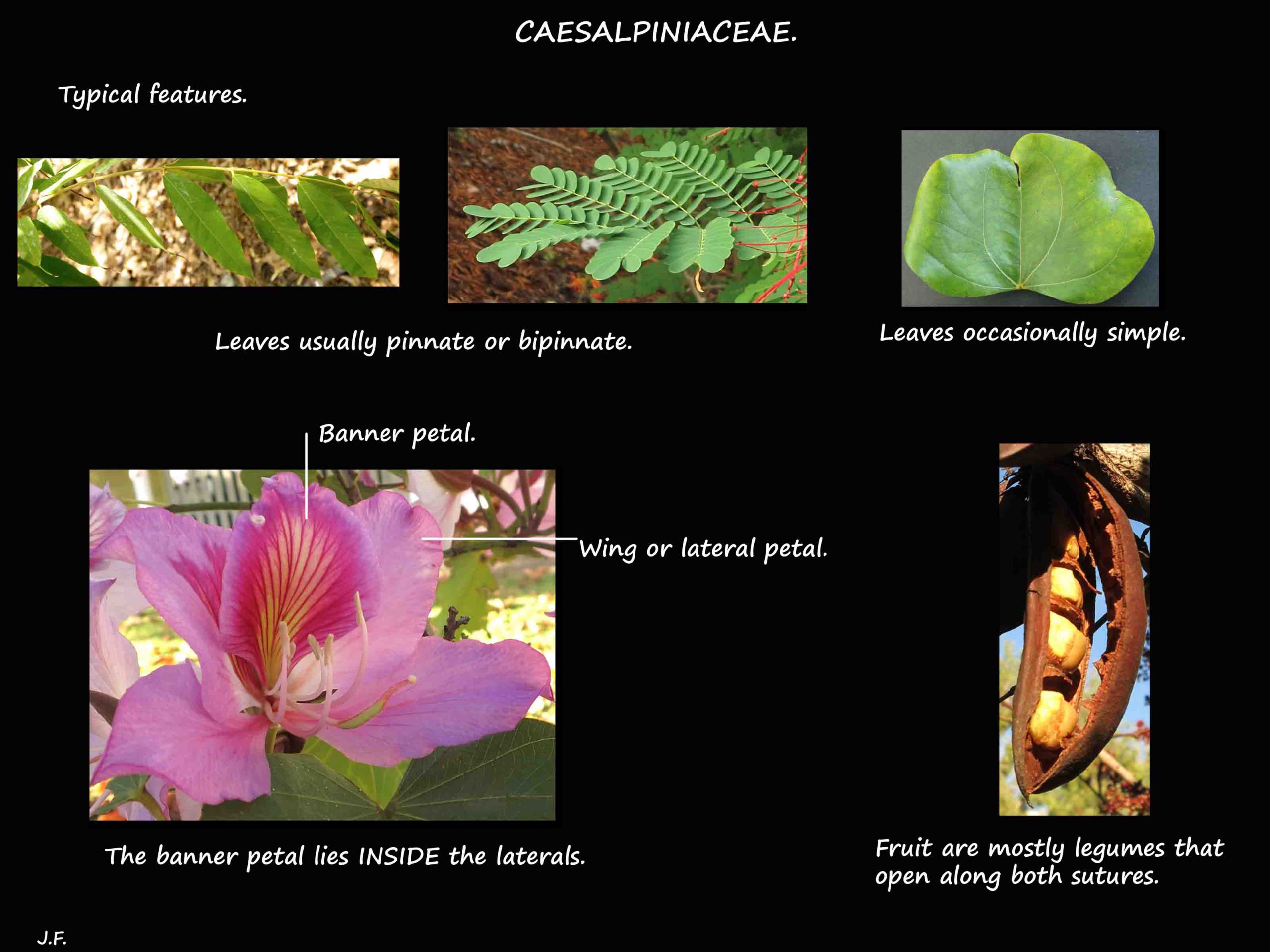Caesalpiniaceae family.
(It is subfamily Caesalpinioideae in a loosely defined Fabaceae family.)
It is known as the Senna family and includes well known plants such as Bauhinia,
Caesalpinia, Cassia, Delonix, Schotia, Senna and Tamarind.
Many are cultivated for timber, medicines or as ornamentals.
There are around 135 – 152 genera and 2200 to 2800 species of mainly tropical plants.
There are 23 genera and around 80 species in Australia.
There are 7 genera and 30 species in S.E. Queensland.
They are more primitive plants than the Fabaceae s.s and Mimosaceae and its members vary
morphologically from each other.
Most are trees or shrubs but there are also some woody vines and a few herbs.
Some genera may have all types of plants.
Leaves are alternate and in a spiral or 2 ranks (distichous).
Most are bipinnate or pinnate with opposite leaflets.
A few have simple undivided leaves.
Leaves almost always have petioles but they may be very short.
The base of the petiole commonly has a large or small swelling or pulvinus.
Small, paired stipules are usually present between the petioles.
They may be leaf-like or scaly and may persist or fall off.
Some genera have thorns or spines.
There are often extra-floral nectaries on the petiole or leaf midrib/s.
The axillary or terminal inflorescences are mostly spikes or clusters.
Some inflorescences are leaf-opposed.
The small to large, mostly bisexual flowers, on stalks, have bracts at the base.
Flowers may be regular (symmetric) but are usually irregular (bi-laterally symmetric).
Flowers may resemble a typical pea or butterfly-like flower (papilionaceous).
The calyx has 5 (3 – 6) sepals, sometimes petal-like, that may be free or partly fused.
There are (1 – ) 5 petals that are mostly free.
In the pea-like flowers the banner petal (the dorsal, flag, posterior or adaxial) is inside the laterals.
The inferior petal is often showy with a wide blade and narrow base.
Colours include red, pink, orange, yellow, purple, green and white.
The stamens or, more often the ovary, may be on a stalk (androphore or gynophore).
There are mostly 10 stamens (1, 3 to many) although some may be reduced to staminodes.
They are usually free but occasionally the bases are joined.
The stamens may be of 2 different lengths.
The basi- of dorsi-fixed anthers open inwards or laterally.
They usually open by longitudinal slits but sometimes via pores.
There may be a gland, with or without a stalk, on the anther tip.
The superior (or slightly inferior) ovary consists of 1 carpel and 1 locule with 2 to many ovules.
There is a single, apical style with a simple stigma.
The fruit are mostly legumes (split on both sides) or follicles (split on 1 side).
Loments also occur – pods with constrictions between the seeds.
Some fruit are indehiscent and described as drupe-like (drupes have a single seed with a hard coating)
or samaroid (samaras are dry, winged fruit).
J.F.



